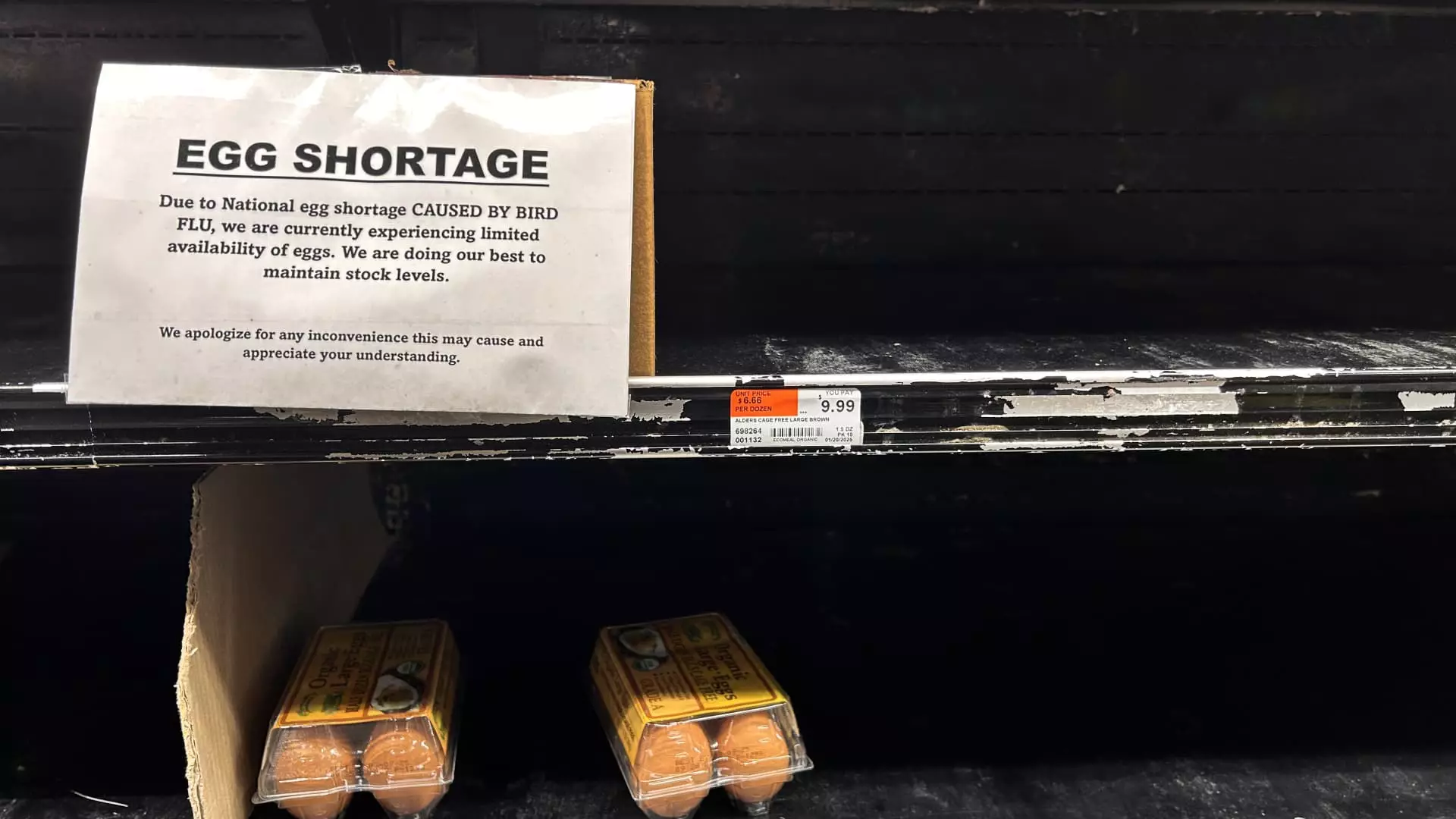The current landscape of the egg market in the United States has become alarmingly dear for consumers, primarily due to soaring wholesale prices that have hit unprecedented highs. On recent assessments, the average wholesale price for large, white shell eggs hit a staggering $8 per dozen, which significantly overshoots the former record of $5.46 per dozen set late in December 2022. As reported by Expana, an agricultural commodity price tracking firm, this surge comes on the heels of a bird flu outbreak that has forced producers to take drastic measures, including mass culling of affected populations.
The ramifications of such a drastic price hike are expected to manifest in grocery stores nationwide, leading to what analysts recognize as an impending wave of sticker shock for consumers who are already grappling with inflation in other areas. Ryan Hojnowski, a market reporter at Expana, explains that the delayed reaction between wholesale and retail pricing means that consumers might not see immediate increases, but they will undoubtedly feel the effects in due time.
As the cost of eggs skyrockets, some retailers have responded with purchase limits on egg products to manage demand amid rising costs. Chains like Trader Joe’s and Costco have implemented measures that restrict how many dozen eggs one customer can purchase. This phenomenon is reflective of a broader pattern among various retailers, as even restaurants such as Waffle House have begun charging additional fees for egg-inclusive dishes, signaling that the impacts of high wholesale prices are filtering down to the dining experience.
Data from the U.S. Bureau of Labor Statistics confirms the heightened costs. In December, consumers were dishing out about $4.15 for a dozen large Grade A eggs at the retail level, a figure that, while lower than the peak of $4.82 in January 2023, still represents a staggering 65% increase from December 2022, when the cost was around $2.51. While overall inflation may be easing, the unique pressures facing the egg market must capture our attention.
Experts have identified Highly Pathogenic Avian Influenza (HPAI), commonly referred to as bird flu, as the primary catalyst for the current inflationary trends in egg prices. The highly contagious nature of this disease has led to the culling of millions of egg-laying hens nationwide to curb further outbreaks. In 2024 alone, statistics reveal that over 40 million egg-laying chickens perished, accounting for approximately 13% of the national flock. This substantial loss has resulted in depleted inventories, reportedly running 15% to 16% below the five-year average, as confirmed by the U.S. Department of Agriculture.
The timing also amplifies the crisis; the fourth quarter of 2024 witnessed a significant slaughter of nearly 22 million hens, coinciding with peak seasonal demand for eggs as households prepared for holiday baking and festivities. Such a convergence has led to wholesale prices that, as Amy Smith from Advanced Economic Solutions described, are “triple, quadruple where we were a year ago.”
Notably, the impact of these escalating costs varies between large national grocery chains and smaller independent retailers. Big players like Walmart and Aldi often possess greater maneuverability when it comes to absorbing wholesale price surges, potentially utilizing their broader inventory or fixed-price contracts to weather the storm. In contrast, smaller retailers may lack this flexibility, leading them to quickly adjust prices in response to rising wholesale costs, which affects the overall pricing dynamics consumers face.
Further complicating the situation, the bird flu continues to wreak havoc as its effects extend into 2025, with millions more egg-laying chickens succumbing to the disease. Alarmingly, the problem doesn’t seem to reach the same scale among broilers—chickens raised for meat—indicating a sector-specific crisis that has predominantly hit egg-laying operations.
The profound increases in egg prices starkly contrast to more steady changes in the meat poultry markets, where chicken prices have risen only modestly over the past few years. Between December 2019 and December 2024, while egg prices climbed approximately 170%, prices for whole chickens and boneless chicken breasts increased by just 42% and 32%, respectively. This discrepancy highlights the unique and dire pressures on egg producers while reflecting broader consumer price trends.
The escalation of wholesale egg prices driven by bird flu spells out a complex predicament for retailers, consumers, and the agricultural sector alike. With the impact trickling down to retail price levels, it remains crucial for all involved to navigate the evolving landscape of food supply and prices, underscoring a critical moment in our food economy that necessitates attentiveness and adaptation. As both consumers and retailers brace for the repercussions, the focus on sustainability, supply chain efficiency, and alternative sources of protein may become increasingly pertinent in the months and years to come.

